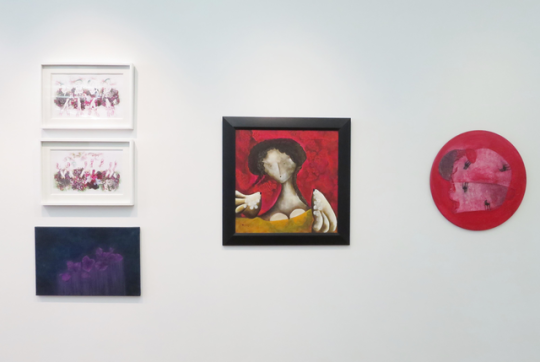BEFORE APPLYING TO AN ARTIST OPPORTUNITY: BEWARE THE IDES OF ARTS (PART 2 OF 4)
Learn about red flags and opportunities to avoid
One of the biggest problems facing artists today is the multitude of scams and schemes out to swindle, especially those on the Internet. And no, it’s not just the foreign princes looking to transfer money anymore. Every artist wants to be discovered and make it big, but that doesn’t mean you should hastily leap into opportunity without looking first. Here are some things to watch out for to make sure you don’t end up playing a game of Go Phish.
- Pay Attention to their Writing Ability: This one is almost a no-brainer for any Internet-savvy person. If the prospective buyer cannot properly form a sentence, they’re probably not legitimate. Poor grammar and misspelled words are the hallmark of identity thieves and con artists.
- Be Careful When Shipping Your Own Work: Scammers will often claim to make their own shipping arrangements or arrange for a third-party to pick up the work. Never ship art work without making sure payment has cleared and you know who will be handling the insurance. Scammers will use counterfeit or stolen funds to pay for work, and you can be held responsible by your bank. Which leads us to the next point.
- Beware of “Urgent” Buyers: Nobody needs your work of art right this minute, as much as you would like to believe that. If a buyer insists on getting artwork in a hurry, they may be pressuring you into shipping before payment has cleared. Take your time.
- Do Not Accept Overpayments: Some schemes involve the buyer overpaying for a work of art and asking for the difference back. Never send the difference back. They have likely paid with counterfeit funds and are only interested in your legitimate money, not your work.
- Watch Your Money: Beware of transactions using suspicious cashier’s checks, money orders or unknown third-party escrow services. If you get conned, it will be difficult if not impossible to retrace.
- Read the Fine Print: It’s all there, clear as crystal. Carefully read any contract. Never sign anything you are uncomfortable with. If necessary, use a lawyer to break things down for you.
- The Art World Wide Web: Online art sales continue to reach all-time highs every year. Some brick and mortar galleries have begun selling artwork to buyers on the web, but many galleries exist exclusively in the digital realm. These online galleries do not necessarily replace the face-to-face sales that occur in physical galleries, but they can complement them and introduce you to new contacts. Have the same consideration for audience and reputation that you would apply to a physical gallery as you do when you put your work online.
- A Note About Vanity Galleries: Some galleries make their money off of the artists themselves and not art buyers. Vanity galleries may charge inflated fees and will not bother to promote or sell your work once it is on exhibition — you pay to play, essentially. This does not mean they are not worth your time, but it does mean you will be responsible for your own promotion. If you are unsure if a prospective exhibitor is a vanity gallery, check with the Art Dealers Association of America, who do not grant membership to vanity galleries. The same guidelines also go for vanity publications, which show off your work in an annual magazine or book for a large fee.
- When in Doubt, Check Online: Resources exist to make sure your prospective buyer is legitimate. Here are some examples of common scam emails. FineArtStudioOnline (FASO) has a database of known illegitimate names, email addresses, and IP addresses that you can search against to stay in-the-know here. Your local Better Business Bureau (https://www.bbb.org/) can ensure a business is legitimate and will tell you if there are any complaints lodged against a company.
Find upcoming deadlines for exhibitions, contests, and competitions on NYFA Classifieds: Opportunities & Services for Artists or search NYFA Source, NYFA’s free database of 12,000+ opportunities for artists.
Go Back to Part 1: Getting Started: Questions to Ask Yourself Before Applying to an Artist Opportunity
Next: Part 3 of 4: Su-Su-Studio: Finding the Right Space
– Written by Sean Doolittle
Image: Installation image of La Crisalida exhibition in NYFA’s Gallery in Brooklyn, NY.





